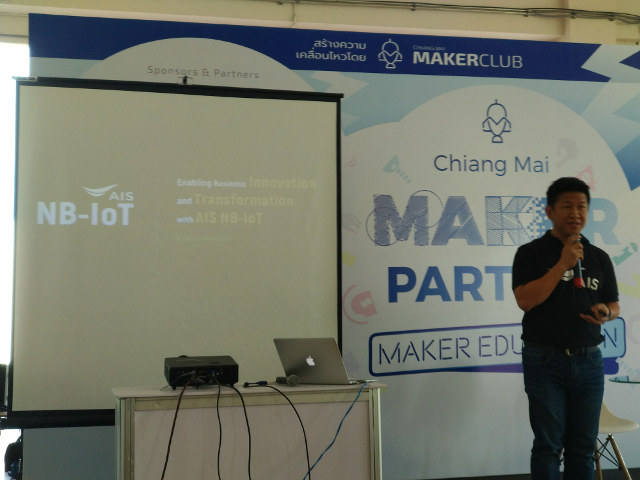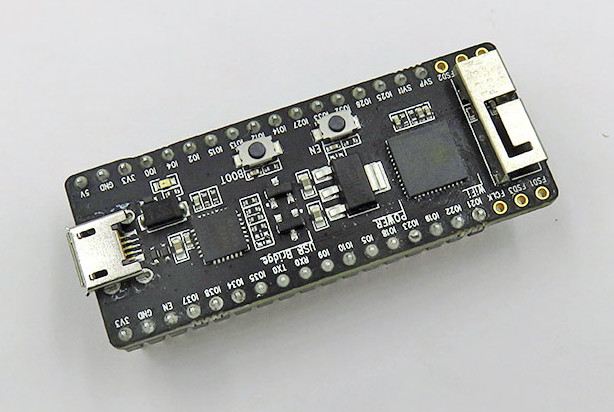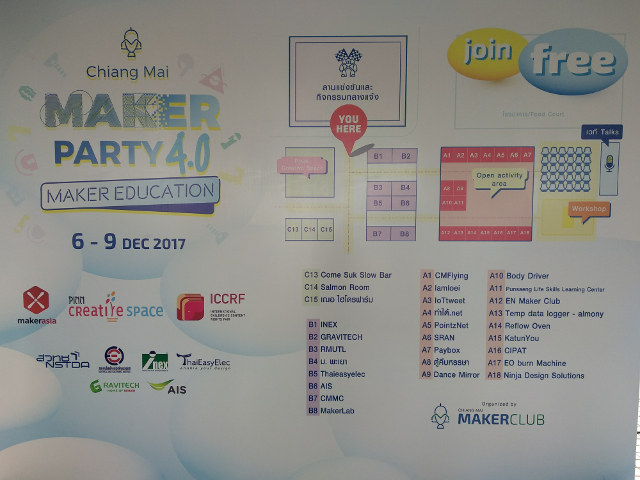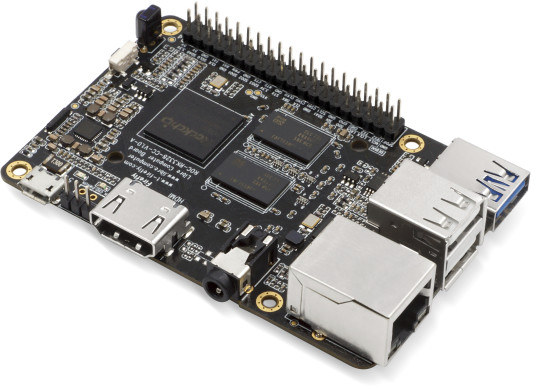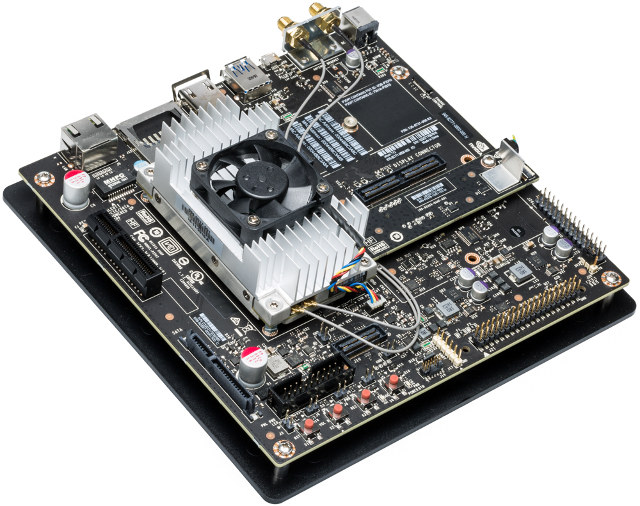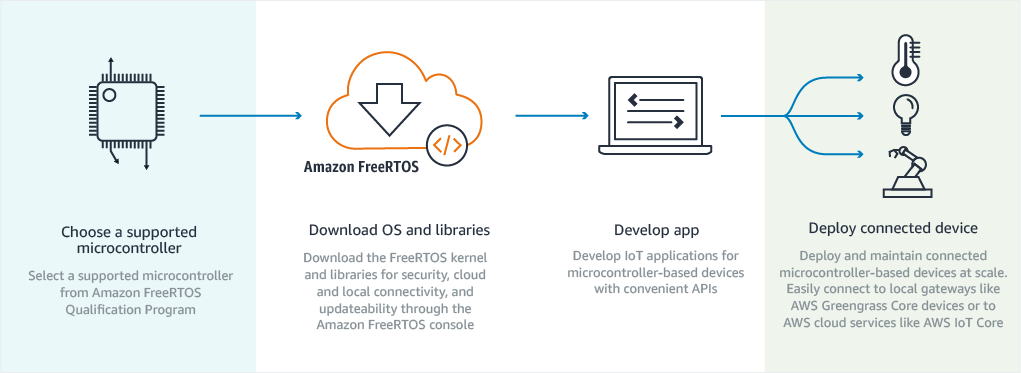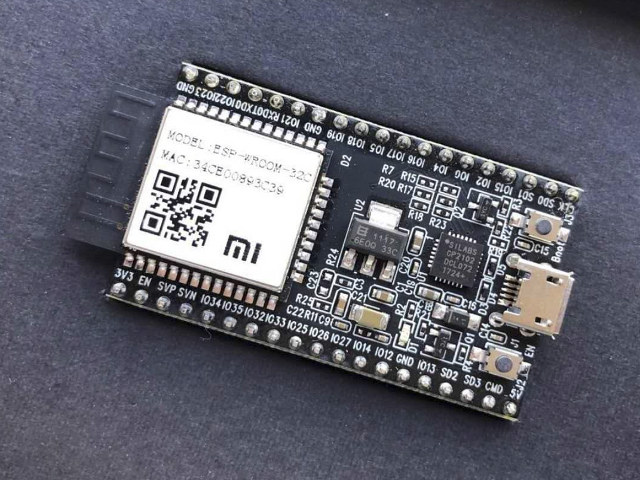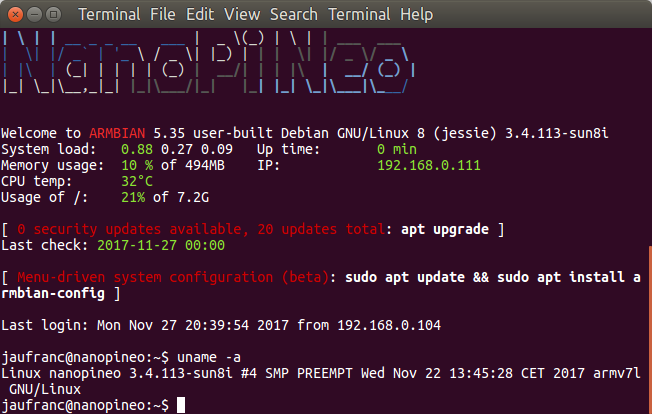As I mentioned in my post yesterday I attended a talk about NB-IoT at Chiang Mai Maker Party 4.0 (2017). It was presented by representatives from AIS, a large telco company in Thailand, and I’ll give a summary of what I learned beside that Xiaomi Mi A1 camera is not that good after all, and I should have taken my DSLR camera with me instead. So apologies for the poor quality of some of the photos… The talk started from a higher level, including marketing / business propositions, and has time passed it become more and more technical. The first part of talk was presented by Phuchong Charoensuk, IoT marketing specialist at AIS, and he provided some more details about the company, and their current B2B IoT/M2M market (400,000 subscribers), before providing an overview of IoT, and how NB-IoT will bring in not only larger businesses but also startups and […]
ESP32-PICO-KIT v4 Board Based on ESP32-PICO-D4 SiP Now Available for $10
A little while ago, I received a bunch of ESP32 PICO Core development boards which were based on Espressif Systems ESP32-PICO-D4 system-in-package with ESP32, 4MB SPI Flash, and other components. The advantage of such chip is that is requires less external component, and allows for smaller designs. For example, the boards I received would leave two row of pin on each side of the board, while most other ESP32 boards will only expose one row on each side. I used the board to play with Micropython ESP32 port, and later-on when I launched a giveaway of 8 of the boards, I found out the name had changed to ESP32-PICO Kit, with the documentation listing v3 with all pins connected to male headers, and v4 with 6-pin not connected to a male header as shown in the photo below. Both versions of the board also have a different pin layout. But […]
A Day at Chiang Mai Maker Party 4.0
The Chiang Mai Maker Party 4.0 is now taking place until December 9, and I went there today, as I was especially interested in the scheduled NB-IoT talk and workshop to find out what was the status about LPWA in Thailand. But there are many other activities planned, and if you happen to be in Chiang Main in the next few days, you may want to check out the schedule on the event page or Facebook. I’m going to go though what I’ve done today to give you a better idea about the event, or even the maker movement in Thailand. Booth and activity area should be the same over the 4 days, but the talks, open activity, and workshop will be different each day. Today, people could learn how to solder in the activity area. The even was not really big with manufacturers/sellers like ThaiEasyElec, INEX, or Gravitech closer […]
Libre Computer Renegade SBC Features Rockchip RK3328 Processor with up to 4GB DDR4 RAM (Crowdfunding)
After Amlogic S905X based Le Potato board, and the on-going Kickstarter campaign for Tritium Allwinner H2+/H3 boards, Libre Computer has now launched an Indiegogo campaign for their Renegade SBC (Single Board Computer) powered by Rockchip RK3328 SoC. The board follows Raspberry Pi 3 form factor like the two previous models, and three versions of the board are offered with 1, 2 or 4GB RAM, making Renegade SBC a direct competitor to Pine64 ROCK64 board. Renegade SBC specifications: SoC – Rockchip RK3328 quad core Cortex A53 processor with ARM Mali-450MP2 GPU System Memory – 1, 2, or 4 GB DDR4 Storage – eMMC 5.x flash module socket (8 to 128 GB) + micro SD card slot Video & Audio Output – HDMI 2.0a up to 4K @ 60 Hz with HDR10 and HLG support, 3.5mm AV port (composite video + stereo audio) Video Codec – 4K VP9, H.265 and H.264, 1080p […]
Top 5 Most Powerful Arm SBCs & Development Boards in 2017 / Early 2018
Raspberry Pi, Orange Pi, and NanoPi boards among others are all great and inexpensive Arm Linux development boards that do good enough job for many tasks, but they may not cut it if you have higher requirements either in terms of CPU power, GPU capabilities and performance, I/O bandwidth, and in some cases software and support. So I’ve decided to make a list of 5 single board computers or development boards that I consider to be the most powerful in 2017, early 2018. I have limited the price to $1,000 maximum, the board must be easy to purchase for most people (e.g. you don’t need to be a tier-1 automotive supplier, or operate your own datacenter), and in case the board is not quite available yet, the likeliness of actual launch must be reasonably high. Those criteria for example exclude Intrinsyc Open-Q 835 development kit since it costs $1.149 and […]
Amazon FreeRTOS Released for NXP, Texas Instruments, STMicro, and (soon) Microchip Microcontrollers
FreeRTOS is an open source real-time operating system for microcontrollers released under an MIT license, and when it comes to adoption in embedded systems it’s right there near the top with embedded Linux according to Aspencore 2017 embedded markets study. For example, some Espressif SDKs for ESP8266 or ESP32 are based on FreeRTOS, and so is Mediatek LinkIt Development Platform for RTOS. The recently announced Amazon FreeRTOS (a:FreeRTOS) leverages the open source operating systems, and extends it with with libraries that enable local and AWS cloud connectivity, security, and soon over-the-air updates. a:FreeRTOS is free of charge, open source, and available today. In order to get started, you’ll have a choice of 4 hardware platforms: STMicro STM32L4 Discovery Kit IoT Node (B-L475E-IOT01A) powered by STM32L475 ARM Cortex-M4 MCU with 802.11 b/g/n WiFi, Bluetooth 4.1 LE, RF (868 / 915 MHz), and NFC connectivity, plenty of sensors NXP LPC54018 IoT module (OM40007) […]
Xiaomi Unveils Their Very Own ESP32 Development Board, Module & SDK
We now have plenty of modules and board based on Espressif System ESP32 dual core wireless SoC, and a fairly good software support with ESP IDF SDK, Arduino Core, MicroPython, Espruino and other solutions. So I was surprised when I saw Teo Swee Ann, Espressif CEO, posted photos about an event – Xiaomi IoT Developer Conference – where Xiaomi apparently introduced their own ESP32 development board, together their own SDK (still empty right now) compatible with the company’s Mijia ecosystem, as part of their “Open IoT platform” The slide below translates as “WIFI module – Automated manufacturing / 4-fold foolproof mechanism / whole process tracing / cost price (about 15 RMB)” and “Open source SDK”, with the price likely the price of Xiaomi ESP32 module (ESP-WROOM-32C) shown on board above (Thank to hm for translation). I could not find much information at this early stage, except new partnership between Baidu […]
Armbian v5.35 Released with Linux 4.13, U-boot v2017.09, New Boards Support
Armbian v5.35 has been released last Friday as a major update that brings Linux mainline kernel to version 4.13, U-Boot mainline to version v2017.09, adds support for 7″ Raspberry Pi display, Realtek WiFi drivers (mainline), and new stable hardware support for NanoPi Duo, Pinebook, and Orange Pi R1. Some other boards got experimental support, including Le Potato, NanoPi NEO 2, Orange Pi Zero Plus, Orange Pi Zero Plus 2 (H5). The desktop version of the images gets a full featured XFCE terminal, OpenVPN connector, a new wallpaper, and various other changes and fixes. armbian-config is normally used to configure the board for example networking configuration, but the utility has become even more useful with support for Hotspot, Bluetooth, SSH server configuration, swtich between stable & beta builds and between kernel applications, adds the ability to start an RDP server, and install third party software such as SAMBA, OpenMediaVault, PiHole, Transmission […]


